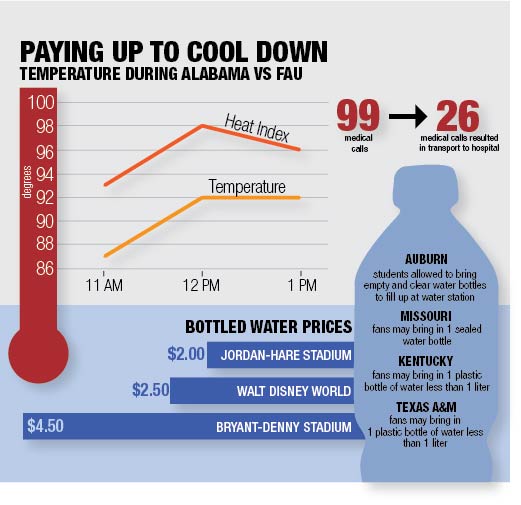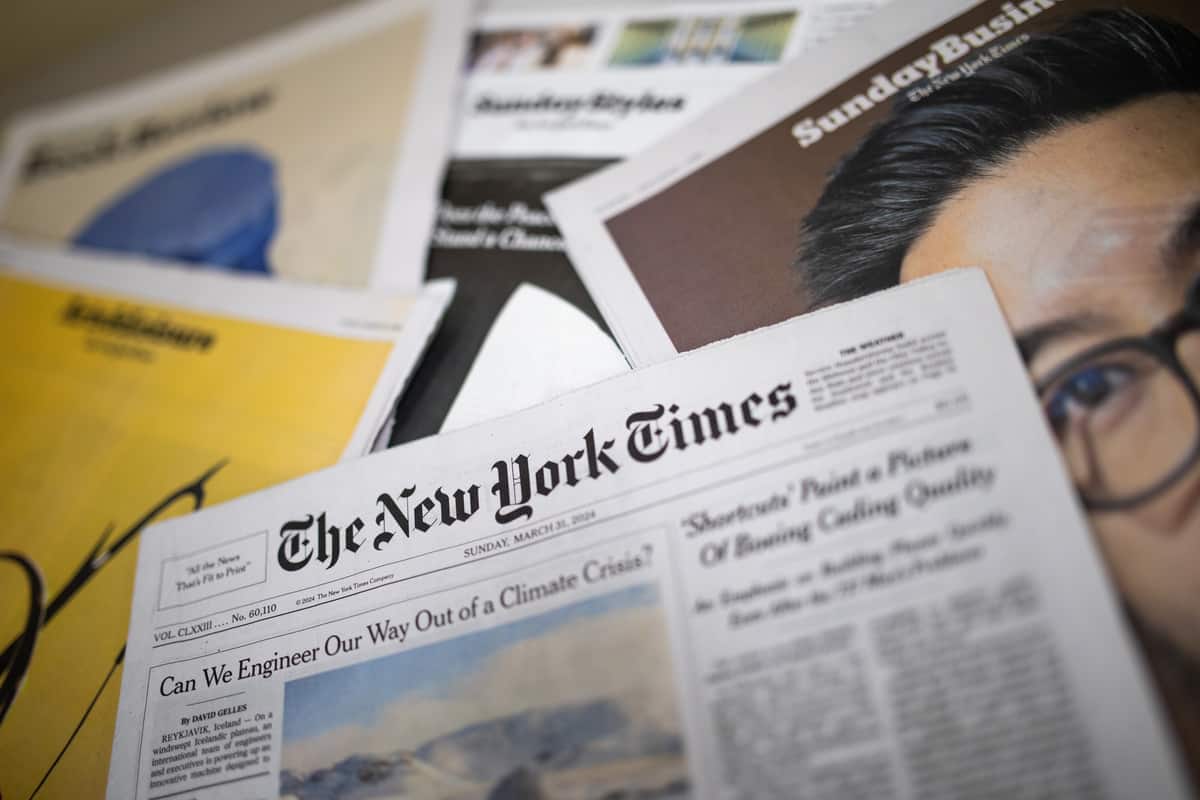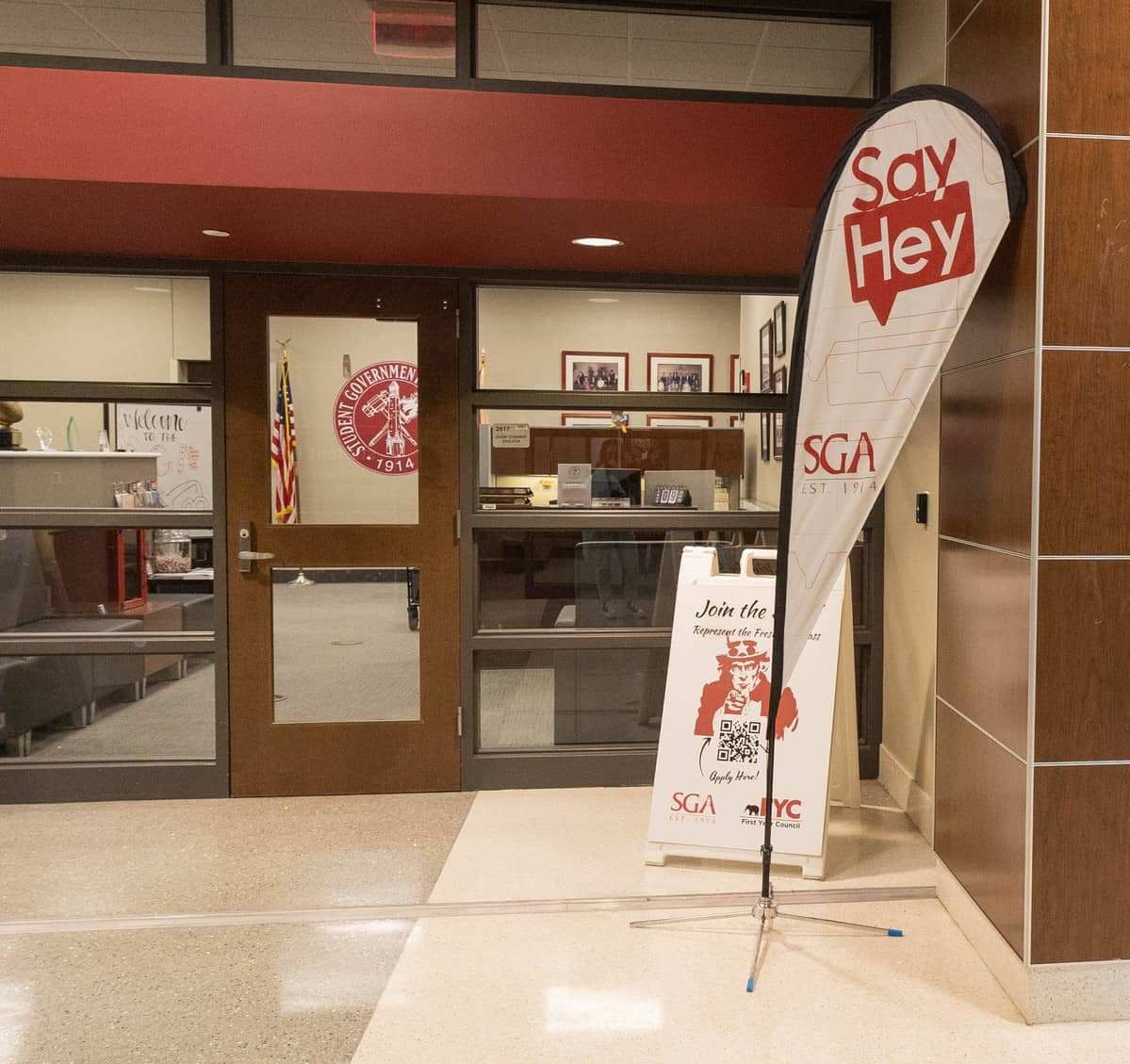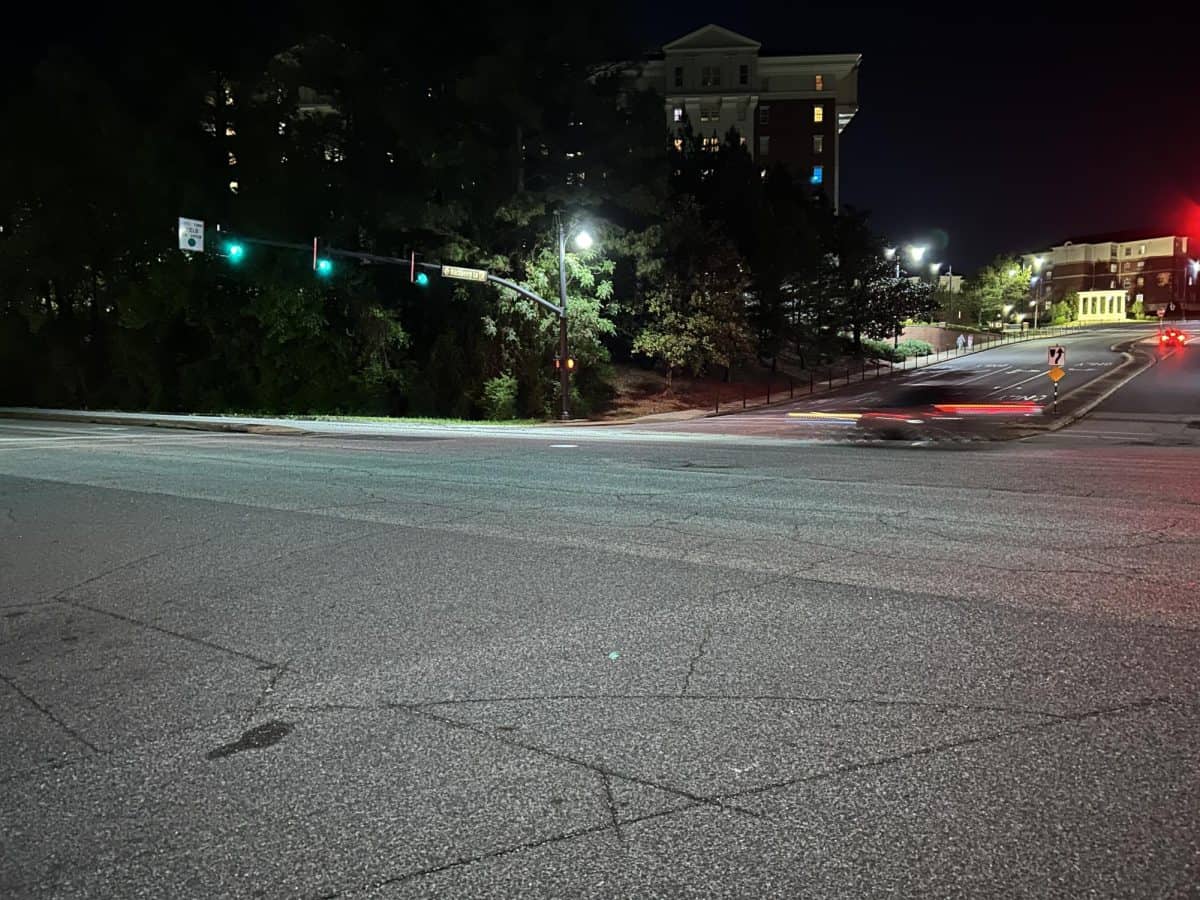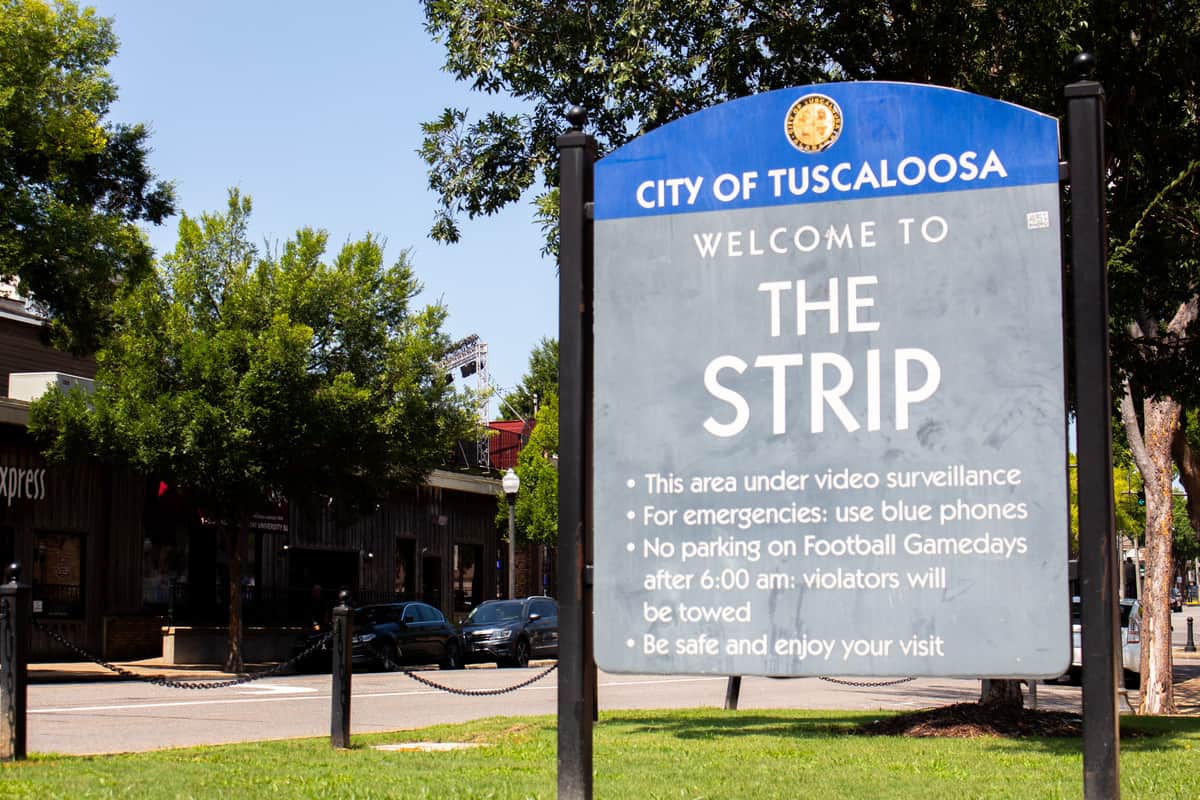By halftime, not a single rain drop had fallen, and most of Bryant-Denny was empty. By the time the rain came during the fourth quarter, thousands had already deserted the stands in part due to the unbearable heat.
The temperature on Saturday at noon, one hour after kickoff, was 92 degrees. The heat index, a combination of air temperature and relative humidity, was 98 degrees. James Spann, chief meteorologist for ABC 33/40, said the average temperature for early September is in the mid to upper 80s.
“In my opinion it is perfectly safe to have a full house at Bryant-Denny in early September in 90 degree heat,” Spann said. “I believe people who live here are very used to it and can deal with it.”
While the heat and humidity might not have been a significant variation from the norm, many people in the stadium suffered from heat exhaustion and dehydration.
“Ninety-nine medical related calls were logged on Saturday – most being heat related,” said Cathy Andreen, director of media relations for The University of Alabama. “Of the heat related calls, the majority of persons treated only required assistance to a shaded area to sit down and cool off. Only 26 medical calls resulted in transports to the hospital. Those transports were not all heat related.”
Spann said mixing alcohol with high heat on gameday is a dangerous combination.
“One main danger of drinking during a hot summer day at the football stadium is the risk of heat stroke caused by dehydration,” he said. “Alcohol lowers the body’s tolerance for heat and acts as a diuretic, meaning it causes the body to lose more fluid through urine, resulting in dehydration.”
Dehydration can become an issue when people refuse to buy water from the concession stands within the stadium, where a bottle of water costs $4.50. The only other option for water is water fountains throughout the stadium. Bryant Denny charges patrons for an empty cup, so students and fans cannot take water from the water fountain back to their seat without purchasing a cup or bottle from the concession stands. To purchase a water bottle and a cup of ice together in Bryant-Denny costs $9. The cost of a water bottle in Jordan-Hare Stadium at Auburn is $2.
Bryant-Denny does not allow containers or bottles of any kind to be brought into the stadium, unlike some other schools in the Southeastern Conference. Texas A&M, Kentucky and Missouri allow attendees to bring one unopened bottle of water into their stadiums. Auburn allows attendees to bring an empty and clear bottle into games and provides water stations for people to fill their water bottles before and during the game.
Ole Miss, LSU, Florida, Vanderbilt, Georgia, Tennessee, Arkansas and Mississippi State do not allow containers of any kind to be brought into football stadiums.
Correction: This story originally said the University of South Carolina does not allow containers of any kind to be brought into Williams-Brice Stadium. Attendees are allowed to bring in one sealed water bottle per person, according to the Gamecocks Game Day Information page.

